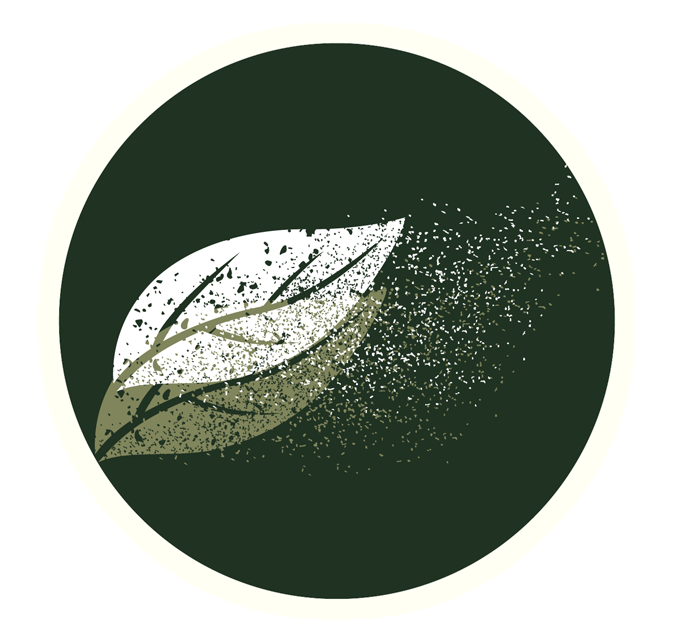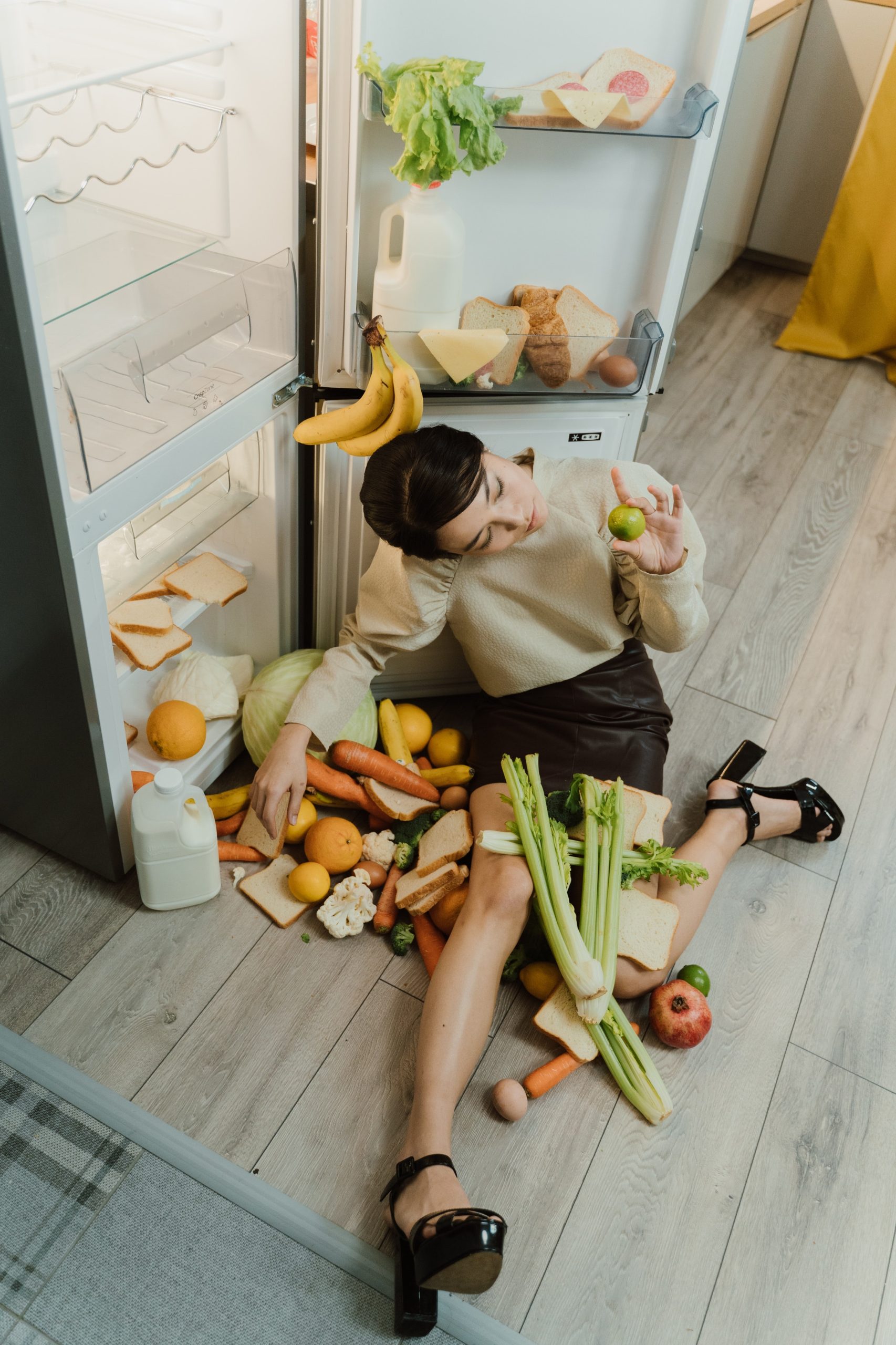There can’t be anywhere on earth putting Green Johannas to better use than the townships of South Africa.
The food waste composters are a vital tool there in the work done by local women to sustain their families, communities and the environment.
The women, known locally as Kamammas (‘mothers who carry their child and community’), use the Johannas to recycle food waste into compost to grow their own food. They then use this produce to cook traditional homemade cuisine for tourists who stay in their guest houses, providing a true taste of the real South Africa.
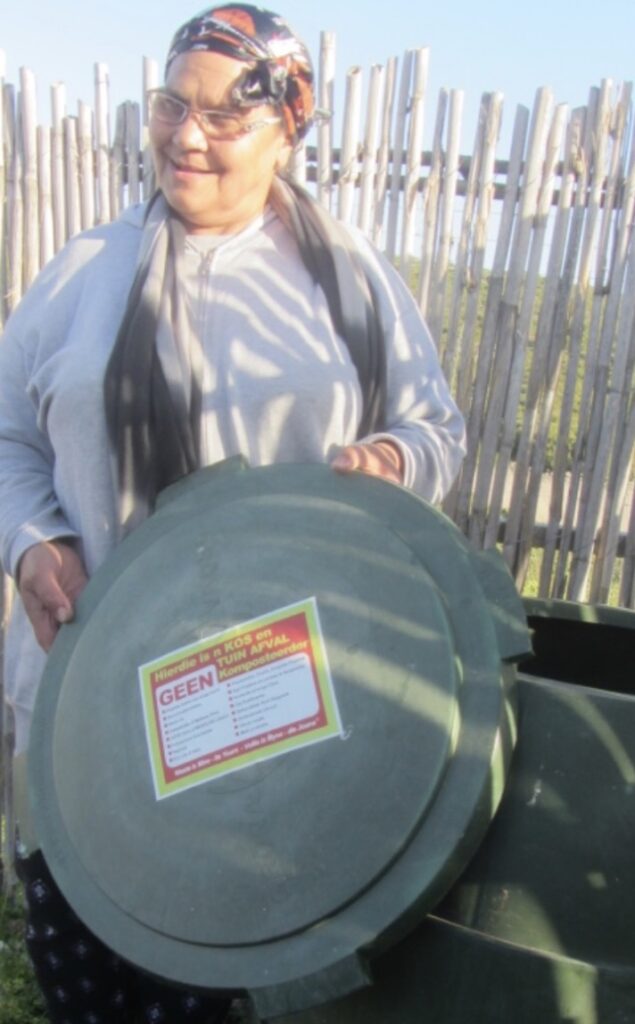
A Kamamma and Johanna
These ‘Homestay’ experiences are organised through the Dreamcatcher South Africa Foundation, a non-profit social enterprise which gives communities, especially women and youth, the opportunity to raise themselves out of poverty through training and employment.
Township residents are trained as hosts, guides and small business owners, enabling them to introduce tourists to the culture of their country.
Dreamcatcher’s founder Anthea Rossouw remembers the Kamammas’ reactions when she first showed them how they could learn to compost using a Green Johanna (shown in the video below).
‘Their reaction was amazing. Such joy, because they could see what this meant for them – to be able to grow their own food. They started singing – ‘Give Me Hope Jo’Anna’ and dancing round the compost bin!’
Dreamcatcher’s recycling work is now even more important since the South African government has committed to halving food loss and food waste by 2030. In recent months Anthea and her team have been running workshops to get more people recycling their food waste with Green Johannas.
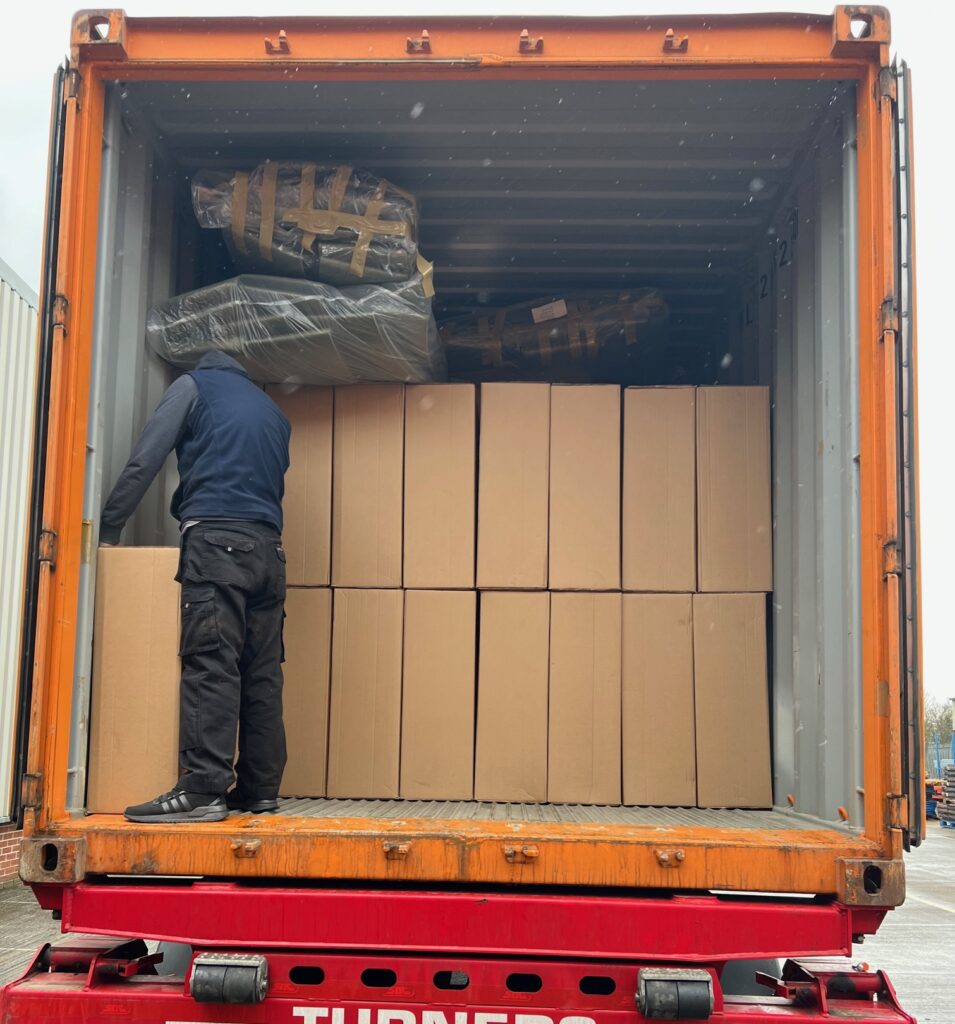
A lorry load of Green Johannas destined for South Africa
The idea for Dreamcatcher came to Anthea more than 30 years ago during the apartheid era when she knew she had to do something about the suffering she saw around her.
‘There was so much injustice, inequality and insanity on a human level and an environmental level,’ she says. ‘It was obvious it couldn’t continue.’
Raised in South Africa by parents who championed diversity in defiance of the apartheid system, Anthea believes in turning challenges into opportunities.
Her father, a master builder of English descent, used to tell her, ‘Forget the pie in the sky and get down to earth.’ He could never have imagined how literally his daughter would take that advice, as getting people composting is one of the many strands of her vision for a better world.
Over the years she has run many composting workshops, both in South Africa and the South of England where she divides her time. She reckons that 99 per cent of the people she talks to have never composted before, but before long they are as evangelical about it as she is.
‘Composting is all upsides – you’re taking food waste out of landfill, where it’s an environmental disaster, and out of homes, with all the health and hygiene issues that involves. And it creates free, organic compost for people to grow their own food and flowers.’
When starting Dreamcatcher, she felt that an answer to many of the problems faced by townships could be found in a new kind of tourism. The tourism industry at the time was booming but completely bypassed the townships, with tourists being driven straight past the communities as though they didn’t exist. She saw a way for the inhabitants to share a piece of the tourism pie by offering visitors the chance to ‘life-see’ as well as sight-see.

A Kamamma gives tourists an authentic taste of South Africa
Anthea’s first proposals centred on the community of Melkhoutfontein, Western Cape, which at the time was one of the most destitute areas in the country, situated between two rubbish dumps and surrounded by waste.
The response from the authorities was ridicule. ‘The attitude was, “But no one will want to go there, no one will want to eat there!” ‘
But Anthea connected with the international marketplace, convinced that tourists would relish the chance to meet the people (as well as the elephants!) of South Africa, thereby getting to know the soul of the country, not just its beauty spots. And she was proved right. Since its inception, Dreamcatcher has facilitated trips to South Africa for hundreds of tourists from over 30 countries.
Dreamcatcher developed authentic tourism experiences led by local people. It is based in the region that boasts the earliest known examples of human artistic activity, in the 73,000-year-old drawings discovered in the 1990s at Blombos Cave.
Homestay with Kamamma
Focusing on struggling areas situated within established tourist routes, Dreamcatcher gives people the skills and knowledge they need to support themselves. Then, armed with these new skills, they develop enterprises such as ‘Homestay With Kamamma’ and ‘Cook-up With Kamamma’ and they go on to mentor others in the community
Educational programmes help to transform children’s lives, breaking the cycle of poverty. A good example of this transformation is one Kamamma who has three children – one is now a trained chef, one is training to become a teacher, the other to become a doctor.
Anthea knew that tackling waste was essential to Dreamcatcher’s tourism aspirations. So she set up a waste education scheme called ‘Waste – it’s Mine, it’s Yours’ in collaboration with the University of Brighton. She describes the waste problem in South Africa as a legacy of apartheid, when the dumping of waste was a way of expressing opposition to the system, as well as a protest against the lack of infrastructure caused by the forced removal of citizens. Moreover, in many communities the inadequate infrastructure led to waste being openly burned in the community or at dumpsites. Over time, waste and litter became a way of life, so training was invaluable in introducing the best ways to manage waste. An environmental ethos soon followed with local people taking pride in their role as custodians of their environment. And what a stunning environment it is!
Rubbish as a resource
Waste is no longer seen as rubbish but a resource. Dreamcatcher has created a thriving crafting industry, with tuition provided by visiting artists, so that young people can intercept waste that might end up on the beautiful beaches and in the ocean and turn it into craft products to sell to visitors. Plastic films are turned into bowls depicting the rich cultural heritage of the area, porcelain pieces incorporated into tiles to embed in walls and old jeans and waste textiles are transformed into bags and backpacks.
Anthea is understandably proud when describing how mass-produced items that are deemed worthless can be given value thanks to the skill of a local craftsperson.
The University of Brighton partners with the Dreamcatcher community. With the help of visiting volunteers and artists, local people have transformed the sides of buildings with brightly coloured paintings that tell the stories of their ancestors – bushmen and women with a rich history and many diverse cultures.
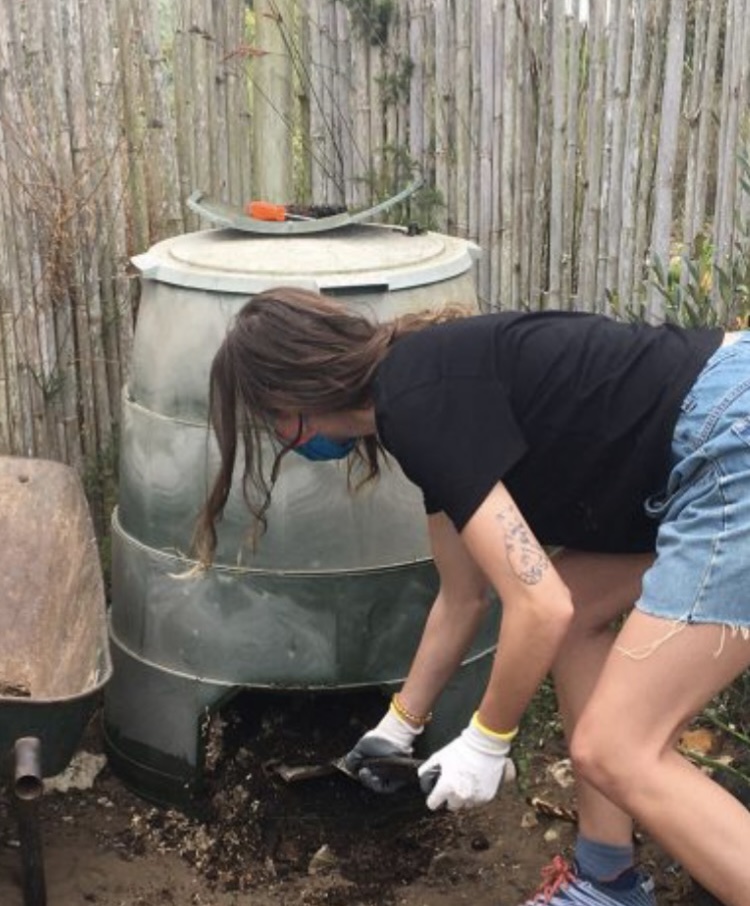
A volunteer takes compost from a Johanna
So how did Green Johannas come to play a part in this story?
Anthea first worked with Green Johannas through a community composting project she started when she was living in West Sussex in England in 2008. She took the same method of training back to South Africa, where she knew it would be transformative.
She believes the fact that the Kamammas were already producing their own food meant they were protected from some of the hardship caused by the Covid pandemic.
Inspired by a Nelson Mandela quote – ‘Something is only impossible until it’s done’ – Anthea says she is excited to see what can be achieved over the next few years.
A daily source of inspiration are the Kamammas themselves.
‘When I first met them I was overwhelmed by their warmth and generosity,’ says Anthea. ‘Each woman brought something from the little she had to make me welcome.
‘These are women who were rejected by their own culture, who had to struggle to raise their children but succeeded in sending them to university. They are survivors every day of their lives. They’ve gone from being servants to service providers.’
Great Green Systems couldn’t be prouder to be part of the Kamammas’ inspiring journey.
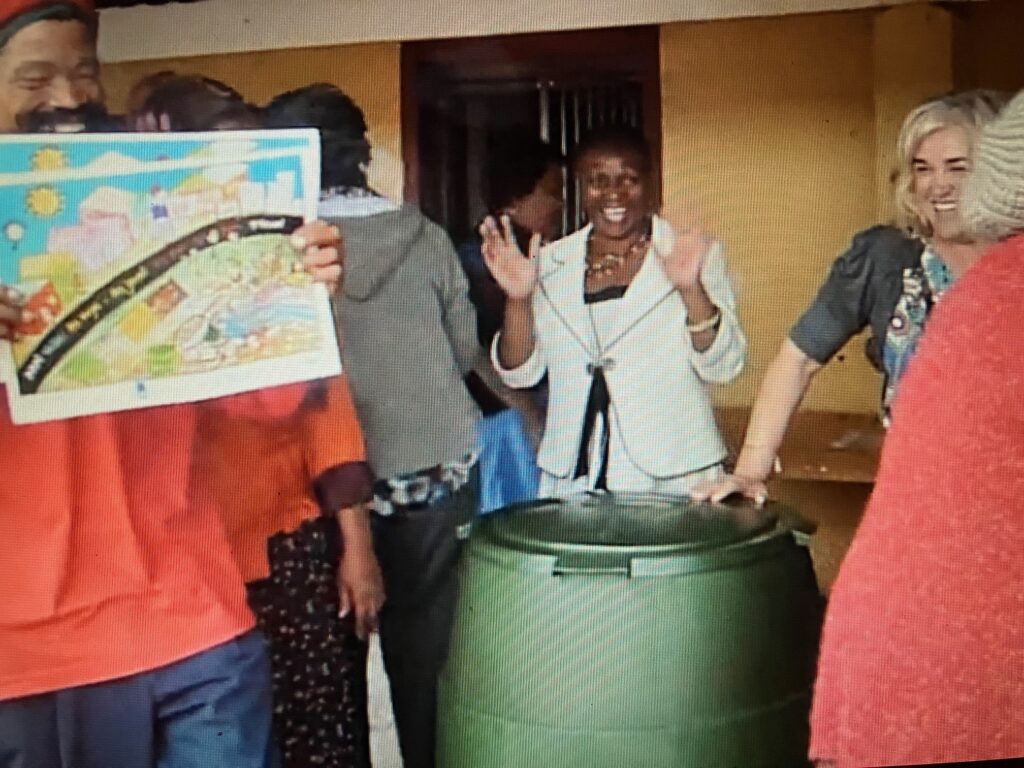
Locals learn how to use the Johanna with Anthea, right.

